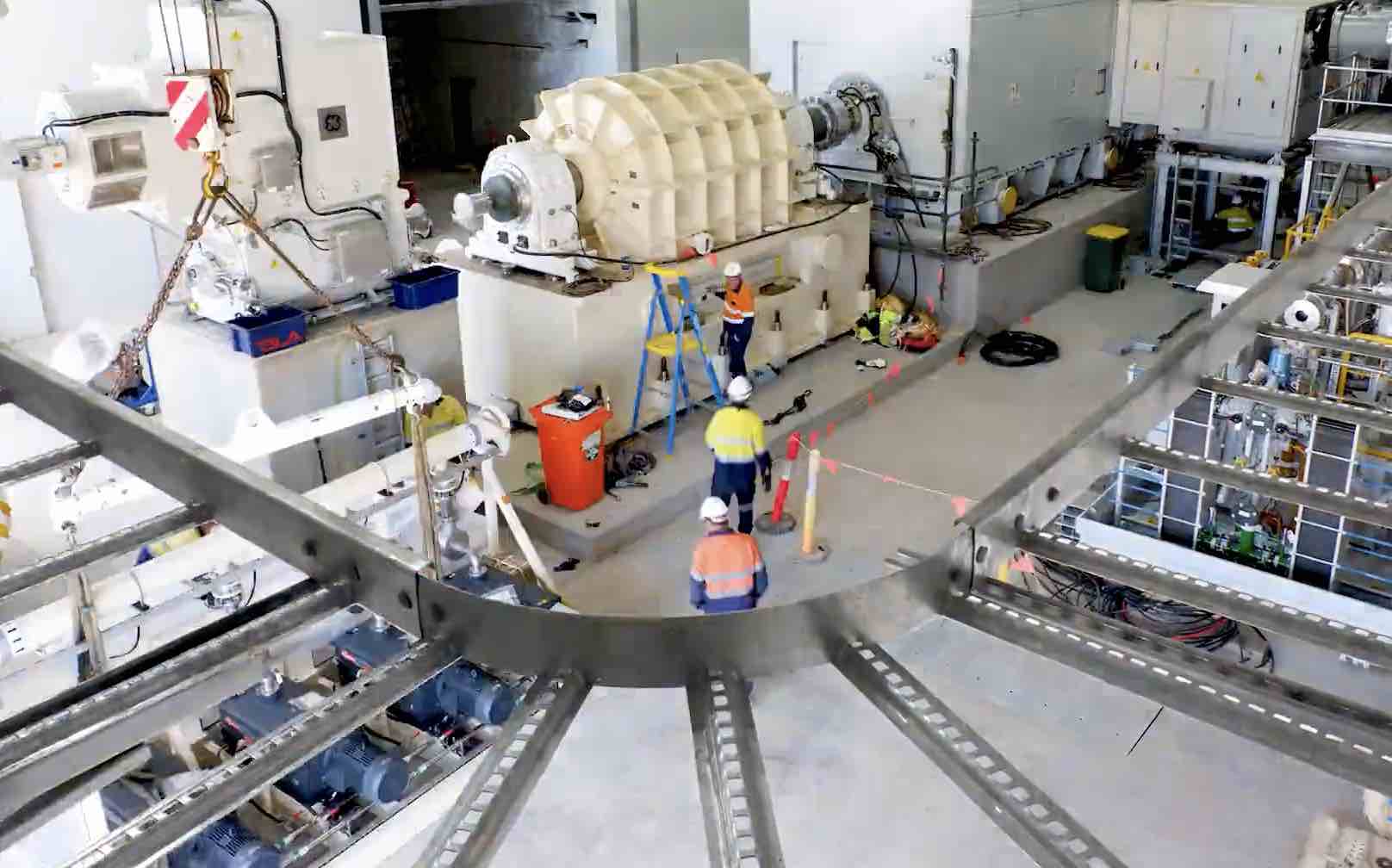
It seems that the four big spinning machines, known as synchronous condensers, installed in South Australia last year are doing the job they were designed to do – freeing up wind and solar and slashing the need to have gas generators operating in the background.
The latest data from the Australian Energy Market Operator shows that constraints on wind and solar output have failed to their lowest level in more than three years, little more than one per cent of output, and South Australia has been the biggest beneficiary.
South Australia leads the world in the share of wind and solar for a gigawatt scale grid – 64 per cent of local demand in the last year alone – but output from its wind and solar farms was capped and often heavily constrained because of concerns about insufficient “ system strength” to ensure the grid was stable.
AEMO’s previous solution to the system strength issue was to instruct gas generators idled because the market price was too low when there was lots of wind and solar production, to switch on.
Those directions came thick and fast, and it was a costly exercise, but the problem has been addressed with the installation of four synchronous condensers – big spinning machines that act like thermal generators but without burning fuel.
That has freed the reigns on the output of solar and wind in particular in South Australia, which are now allowed to produce up to 2,500MW in certain conditions with as little as 80MW of gas generation in the background.

The latest Quarterly Energy Dynamics report from AEMO shows that curtailment for system strength issues has virtually disappeared in South Australia, taking overall constraints down to their lowest level since early 2019, when the average constraint across the main grid was more than 180MW.
Constraints do still happen – now mostly due to transmission congestion or other security issues – and this has also reduced (although transmission constraints are still up from the same time a year ago because of the increase in wind and solar production).
And transmission remains a major issue, because it is the lack of capacity in the network that is causing delays in new projects and connections. This is being addressed, albeit slowly, with the roll out of new renewable energy zones and AEMO’s Integrated System Plan.
AEMO says that as a proportion of available variable renewable generation (wind and solar), curtailment represented a NEM-wide average of 1.1% of potential output, its lowest level since the first quarter 2019, and well below the five per cent level reached in the third quarter of 2021.
Wind and solar farms are often constrained for economic reasons – some are required by their clients to switch off if wholesale market prices fall into negative territory – but this has not been recorded in the latest quarter by AEMO.
The cost of directions to gas generators also reduced significantly, from more than $37 million in South Australia in the final quarter of last year to just $5.7 million this year.
That’s also because the high cost of gas, which flowed through to the electricity markets, meant that gas generators were happy enough to switch on without being told to do so by the market operator.
Giles Parkinson is founder and editor of Renew Economy, and is also the founder of One Step Off The Grid and founder/editor of the EV-focused The Driven. Giles has been a journalist for 40 years and is a former business and deputy editor of the Australian Financial Review.
